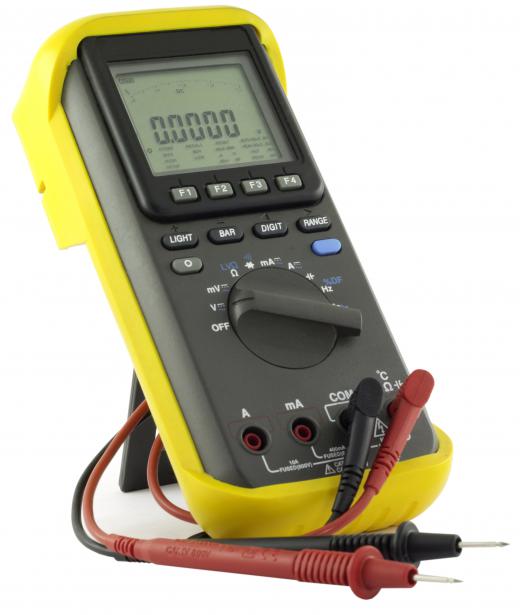What is an Ohmmeter?
 Karyn Maier
Karyn Maier
An ohmmeter is a device that measures the amount of electrical friction generated as electrons pass through an electrical conductor. Also known as electrical resistance, its value is expressed in units of “ohm.” This measurement is governed by “Ohm’s Law,” which states that the current passing through an electrical circuit is directly proportional to the amount of voltage exerted. When written as an algebraic equation, this natural phenomenon would look like this: R = V/I, where R is Resistance, V is Voltage, and I represents Current. This illustration of the relationship between these values is attributed to the 19th century German physicist and teacher, Georg Simon Ohm.
The mechanics of how an ohmmeter works is very simple. First, an ohmmeter needs to be able to generate an internal flow of current; therefore, it comes equipped with its own battery. The device also consists of two leads, from which the resistance between them is measured. The red lead is connected to the corresponding positive terminal of the electrical unit being tested, while the black is attached to the negative. As the current flows from the battery and through the unit, the ohmmeter measures the drop in voltage, or resistance, that occurs.

If there is an open in the circuit, the result produced is termed “infinite resistance,” and is indicated by the needle of the instrument extending to the far left of the logarithmic scale. This may seem odd since most other electrical measurement devices swing far right to indicate a maximum level. On the other hand, if there is no resistance, an ohmmeter will give a reading of zero. However, if resistance was expected, then this reading indicates that there is a short in the unit being tested.

While the earliest devices used only two leads, the next generation consisted of four. One pair directed the flow of current, while the other measured resistance. This improvement was intended to compensate for any variance in voltage regulation between the first two leads that could compromise accuracy, particularly when attempting to measure very low resistance. Finally, the modern ohmmeter in use today provides digital readings with much more precision, a marked improvement over its analog predecessor.

Regardless of being analog or digital, an ohmmeter should never be connected to an electrical unit that has its own source of voltage. For one thing, the instrument is designed to measure resistance based on the flow of current produced by its own battery. Any interference from another current source will undermine its function and produce false readings. In addition, if the secondary source of voltage is high enough, it may irreversibly damage the ohmmeter.
AS FEATURED ON:
AS FEATURED ON:













Discuss this Article
Post your comments